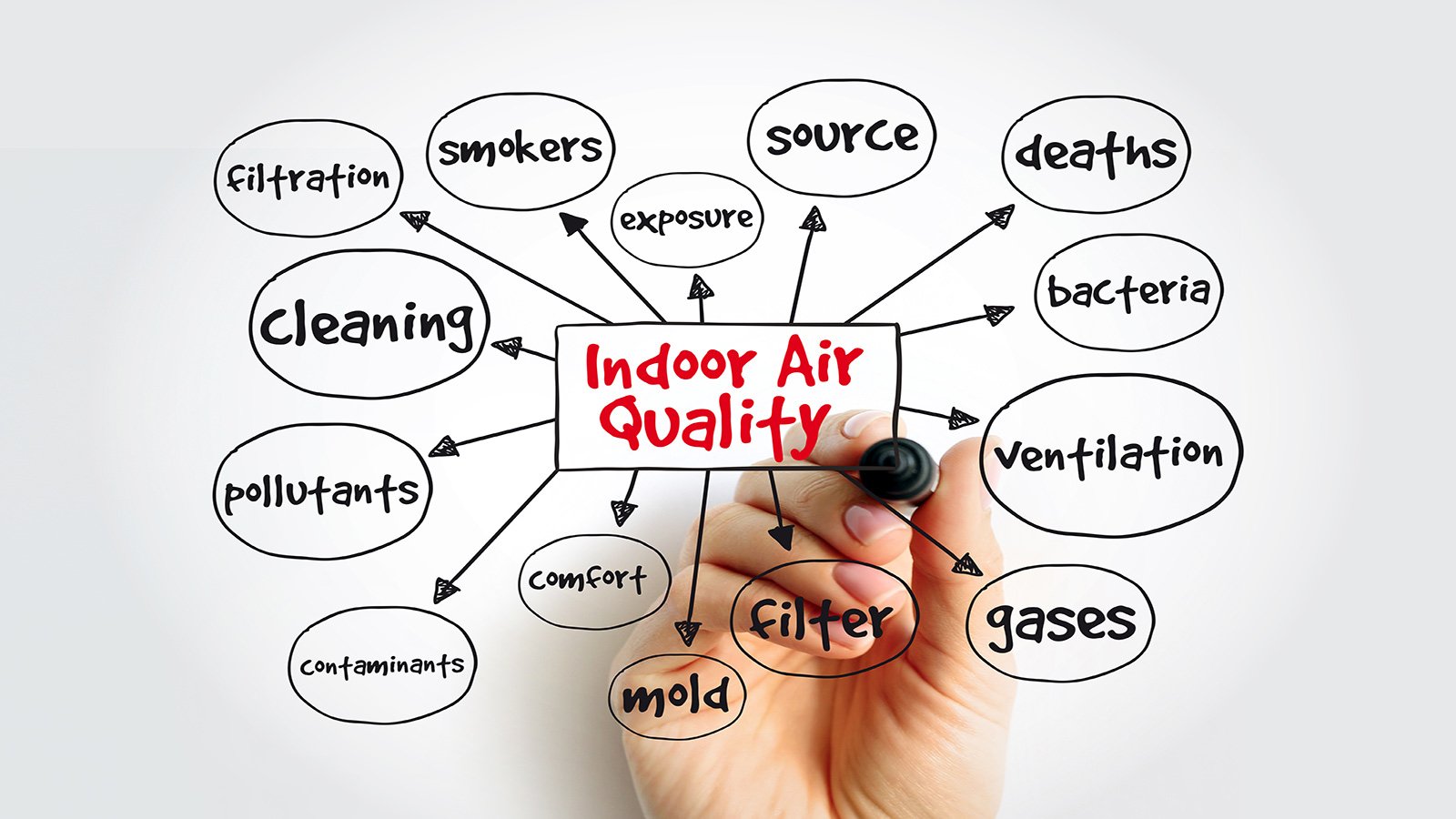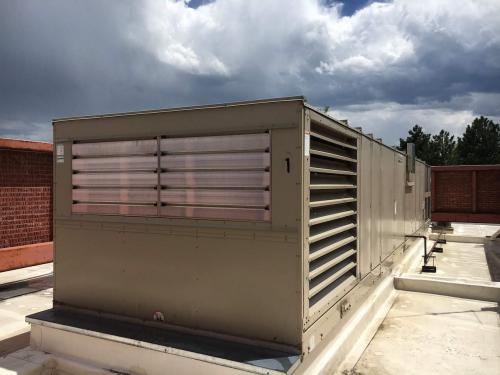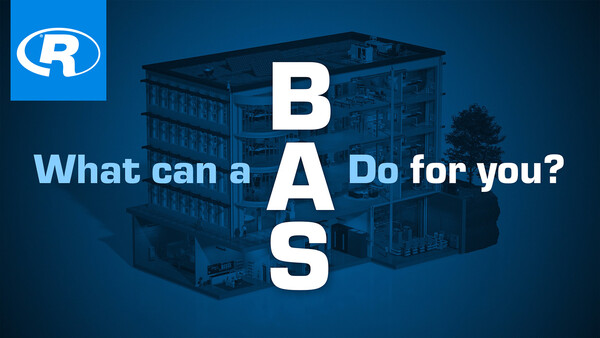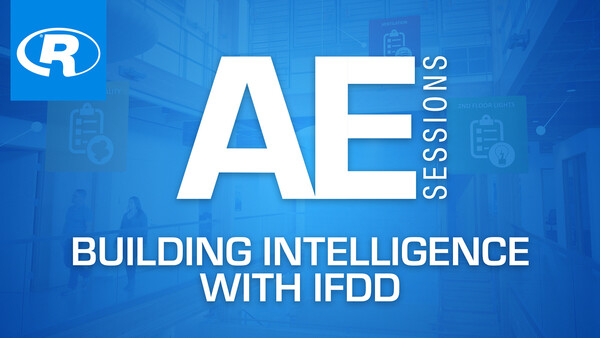How building automation impacts health, efficiency, and indoor air quality in hospitals
How does building automation ensure hospitals are safe, secure, comfortable environments for everyone?





Indoor air quality (IAQ) concerns for all building types came to the fore during COVID-19. Shifting and competing scientific positions surrounding transmission of COVID-19—along with various heating, ventilation, and air conditioning products to combat the virus—hit the market in record time.
As building owners and occupants juggle competing priorities with occupancy, smart, practical, and layered solutions are the ones proving to win out in the battle to manage indoor air pollution.
COVID-19 is one of several viruses in the class of biological pollutants in the broader category of indoor air pollutants. It’s important to remember an indoor space can experience pollution not only from substances such as the COVID-19 virus but also bacteria, mold, radon, dander, pollen, or smoke. Industrially produced substances such as VOCs and chemicals are classified as indoor pollutants.
The goal with all IAQ concerns is air free from harmful pollutants, what can be termed a zero-pollutant building. Though in practical terms a building likely contains some level of pollutants, a zero-pollutant building does not contribute adverse health effects to its occupants. IAQ refers to the air quality in and around buildings and structures, especially as it relates to the health and comfort of building occupants.
No matter the contaminant, the following pragmatic steps are useful for remediation. The path to healthy indoor can be achieved by
Viruses can be transmitted in three main ways. The first is through human contact with animate or inanimate objects with the virus. These objects are known as fomites. The U.S. Centers for Disease Control and Prevention ruled that fomites are not a major source of COVID-19 transmission due to the lipid envelope structure of the virus, something on the order to 16 percent to 25 percent.
The second method of transmission is through droplets, which are larger particles that fall to the ground after being expelled from the mouth or nose.
The third method of transmission is aerosol, which is made of particles so small they float in the air for a time after being expelled. Aerosol transmission is accepted as the dominant form of COVID-19 transmission, like previous discoveries made for diseases such as tuberculosis, measles, and chicken pox. Physical and mechanical methods are required to “treat” COVID-19 in airstreams. This means the virus that causes COVID-19 can float in the air in aerosol form, like smoke particles hover for a time.
In indoor environments, aerosol can linger longer—and longer still in poorly ventilated indoor spaces. The virus can spread farther than 6 feet from a source, well beyond the minimum social distancing distance. For this reason, poorly ventilated indoor spaces need to be addressed as high risk for health concerns from COVID-19.
The size of aerosols versus droplets is a source of debate, though the consensus about particle size lays in the 0.1 to 100 microns range for both, with droplets in the larger part of the range. If droplets are defined as particles that fall to the ground within 6 feet and are also visible, that definition can still pose an issue because distance traveled depends on the velocity of the expelled particles.
For example, a person sneezing or talking determines the distance of travel of a particle of the same size. Poor air exchange can prolong the time aerosolized particles can remain airborne.
When talking about mitigation of virus transmission indoors, several actions follow the path to healthy indoor air. It’s important to note there are no completely safe public indoor environments during a pandemic, no matter what actions are taken, but risk of exposure can be greatly reduced.
First, take actions that limit the amount of virus in the air. Begin by limiting the amount of people in the building. Have people who are in the building adhere to close-fitting mask wearing and social distancing. This is why officials moved to requiring reduced capacity in restaurants and office environments that remained open during the pandemic. Another action is limiting activities that produce more airborne particles, such as shouting and vigorous exercise.
Housekeeping and wayfinding are also important. Keep a sanitized environment, disinfecting surfaces contacted by multiple people, and limit or close use of shared facilities in the building. Arrange travel in the building to maximize distance from person to person, and contain areas of the building that are not well ventilated.

It’s important to further address ways to reduce the concentration of virus or indoor air pollutants in the building. Increase the amount of outdoor air that enters a given space through ventilation strategies. This can be through open windows and doors if outdoor air contaminants and air temperature and humidity conditions are not unhealthy. Use fans and air circulators to speed up the exchange of air through windows and external doors.
Source capture can also be a useful strategy, such as exhausting potentially densely populated areas such as reception or waiting areas and negatively pressurizing them with respect to the rest of the building.
Increase ventilation air volume brought through ducted intakes into building mechanical systems. As a rule, most HVAC systems with direct expansion cooling can handle roughly 25 percent outdoor maximum. The objective is to ventilate spaces and not leave outside air dampers shut. Six air changes an hour is an ideal baseline target; five air changes is a good target. As a comparison, a typical rooftop unit or split system with 25 percent outdoor air provides around 1.5 air changes per hour, so most buildings are a long way off this target.
Filtration of airflow in building HVAC systems is another method of trapping viruses and pollutants. Filters have various ratings that define their ability to trap particles of different sizes. The most popular rating in use today is the MERV rating, which measures the performance of filtering particles in the 0.3- to 10-micron range.
The size of the COVID-19 virus is 0.125 microns in free form, but COVID-19 attaches itself to larger particles and does not typically exist in its free form. Organizations such as ASHRAE recommend upgrading air filters in HVAC systems to the highest efficiency possible that is compatible with the system and checking the filter fit to minimize filter air bypass.

Aim for a filter with a minimum MERV 13 rating or higher. A MERV 13 filter has an efficiency of roughly 90 percent of particles in the 3- to 10-micron range, 85 percent of particles in the 1- to 3-micron range, and 50 percent of particles in the 0.3- to 1-micron range. To extend the service life of a MERV 13 filter, a prefilter of a lesser MERV rating should be installed upstream.
Beyond MERV-rated filters is the high-efficiency particulate air (HEPA) filter. HEPA is another of the pleated mechanical filters. These filters are required to have a minimum removal efficiency of 99.97 percent on particles 0.3 microns in size. Other particle sizes are trapped with higher efficiency in the HEPA filter. In-line HEPA filters typically don’t work on an HVAC system not designed for them due to the high pressure drop imposed on the system. Bypass-type HEPA filters are a workaround that can be used on some mechanical systems, space permitting. These are filters that have their own fan systems and circulate and filter typically a portion of the total HVAC system airflow.
Filtration plays a role in overall virus risk mitigation, but like all the solutions presented here, filtration is not a solution by itself. It must be combined with other measures to build on its beneficial effect.
Another approach to filtration and air cleaning is consideration of using portable air cleaners, or air purifiers. The most effective class of air purifiers has HEPA filters to supplement increased HVAC system ventilation and filtration, especially in areas where adequate ventilation is difficult to achieve. Directing the airflow so it does not blow directly from one person to another reduces the potential spread of droplets and aerosols that may contain infectious viruses.
Portable air cleaners may be helpful when additional ventilation with outdoor air is not possible without compromising indoor temperature or humidity comfort or when outdoor air pollution is high. For an air cleaner to be effective in removing viruses from the air, it must be able to remove small airborne particles in the size range of 0.1 to 1 micron.
Air cleaning is not enough to protect people from exposure to the virus that causes COVID-19. ASHRAE guidelines recommend using HEPA air purifiers that provide a minimum of two air changes per hour. It’s important to note that with any filter, a virus is not disabled, continues to live in the media, and must be disposed of carefully. Some scientists advocate avoiding portable air purifier with add-ons that contain ionizers or ultraviolet lights due to the potential for adverse effects of ozone.
The benefits obtained from a combined outdoor air ventilation plus portable air cleaner with HEPA filter combination help building managers reach the recommended levels of five to six room air changes per hour. But experts in the scientific research community believe the transmission of infectious disease through HVAC systems, particularly those in nonmedical buildings, is a relatively small factor.
Once actions are taken to limit the amount of virus in the air and reduce the concentration of virus in the building are addressed, employ solutions that disable the virus. Techniques such as germicidal UV light (UVGI or UVC), ionization, plasmas, and oxidation fit into this category.
UVGI has proven to be effective technology used for more than a century in disabling or deactivating viruses and can be used to supplement ventilation and filtration strategies and increase effective air change rates. In addition to inactivating virus, it can kill bacteria and mold. Applications are available that locate lighting in air-handling systems shining on coils, filters, and wet surfaces or in the airstream.
In-room applications are used in the occupied zone that sterilize a room once unoccupied. Upper-room disinfection that directs energy above the occupied zone is desired. One drawback of these systems is the UVC lights cannot shine on skin or eyes without causing severe burns. Protection controls must be in place to insure people are not exposed with lights operating. Newer technology UVGI lighting is being developed at a lower wavelength that can be shone directly on people, but it is not yet commercially viable.
Another technology that gained popularity during the pandemic was needlepoint bipolar ionization systems (NPBI). NPBI operates by releasing negative and positive ions into the air that disable viruses. In-HVAC system applications that use the HVAC system as the delivery method and in-room portable units are available. NPBI inactivates viruses and bacteria; kills molds and mildew; neutralizes VOCs, smoke, and odors; and aids in collection of pollen and airborne dust particles. When you choose an NPBI system, verify it is UL 2998 compliant, meaning it does not produce harmful ozone. The units have optional sensors that can measure ion production levels and report to a building automation system.
NPBI systems have been in existence for some time as an alternate to the ASHRAE 62.1: Ventilation for Acceptable Indoor Air Quality ventilation rate procedure to lower ventilation volumes using ASHRAE’s indoor air quality procedure. This procedure has fallen under criticism to being inadequate for acceptable IAQ because it considers a minimal list of contaminants and uses a subjective odor test. Advantages of NPBI include a more favorable cost point relative to UVC, self-cleaning, and little to no maintenance. As with any system choice, proper design, installation, and maintenance are required following manufacturer’s instructions.

Another frontier on the path to a zero-pollutant building is smart building technology. A smart building uses data and technology to share information between building systems and optimize building performance.
Historically, smart buildings have focused on HVAC systems, managing energy use, building access control, and lighting control integration. It is not difficult to imagine the power of a building information and control systems being expanded to help manage occupant health through activities such as thermal imaging, managing building occupancy levels, and social distancing.
Smart buildings, when designed with IAQ in mind, have a place in the war on virus transmission and improving occupant health and wellness. Smart buildings need to employ technologies and data integration to support occupant health and wellness. New technologies and the ability to communicate across those technologies with data analytics allow building operators and occupants to optimize operations to maximize health and wellness.
Smart buildings provide more information and control for IAQ concerns. For example, CO2 sensing is becoming commonplace in buildings with a building automation system. Building automation systems are being used to reduce the amount of outdoor air, thus saving energy cost, by measuring CO2 levels, a process known as demand-control ventilation. But CO2 is a tracer for IAQ and can be thought of as an indicator of poorly ventilated spaces. One adaption of CO2 monitoring during a pandemic is the building automation system can be used to notify occupants to move out of a space if the level of CO2 or other dangerous gas increases and issue a work order to investigate the potential ventilation issue.
Smart building analytics platforms integrate data from utility companies and weather resources to reduce operating costs. With the arrival of more sources of external system data, such as air quality alerts, virus level alerts, or statistical models of rates of infection by air change, a building automation system can conceivably use the data to alert operators to control sequence changes or provide notifications to building managers or occupants. This has the potential to create a healthier, safer environment for occupants. The age of COVID-19 was met with an accelerated shift to contactless control solutions, including access control, plumbing fixture control, and app-controlled or voice-activated devices.
Another useful smart control application relates to measurement of space use or occupancy levels, even counting the number of occupants in a space. The control system can indicate space use, space density, and allocations for social distancing and optimize cleaning services. Control systems can be used to restrict who may enter a facility during certain conditions or limit access in specified areas.
Sequencing protocols can be used to automatically shift to alternate modes of control during a pandemic. For example, on high-alert orders from government officials, demand-control ventilation strategies can be temporarily disabled and operating schedules adjusted to provide postpurge or prepurge strategies after or before occupancy to flush the building with outdoor air. Think of these strategies as morning warm-up or cool-down with the outdoor air dampers open.
Depending on the season and climate zone, pre- or postpurge strategies save energy by running HVAC systems during the time of day when outdoor air temperatures least impact energy cost.
COVID-19 sparked renewed interest in combating indoor air pollution in the quest for the zero-pollution building. There is no one-size-fits-all solution, and the solution does not lie with one stakeholder but rather a team approach involving owners, architect, engineers, installers, and manufacturers. Best results are achieved with simple, smart solutions informed by science, layering strategies to yield the largest combined effect.
Do you design building automation systems? Our website offers free tools and utilities for building design and automation consultants. Make your life easier, save time, and save effort by registering for a Consultant account on our Reliable Controls Support Center.
This content was previously published by Consulting Specifying Engineer

How does building automation ensure hospitals are safe, secure, comfortable environments for everyone?

Learn when and why MS/TP communication is helpful in building automation systems.

From the moment you park your car at a hockey arena, your comfort and safety are enhanced through a building automation system. Here’s how.

Building automation systems can make buildings truly intelligent, reducing their carbon footprint and saving money. Learn how.

Ever wonder how a building automation system ensures safety and accuracy in lab work?

Museums—and their building automation systems—play an important role in preserving the preserved. Learn how.

When you see a doctor or personal trainer, you benefit from their knowledge and experience. In the same way, a building automation system should provide all the tools you need to maintain your buildings in optimal health.

Combatting climate crisis requires us to view the built environment holistically. Learn why open protocols and interoperability matter.